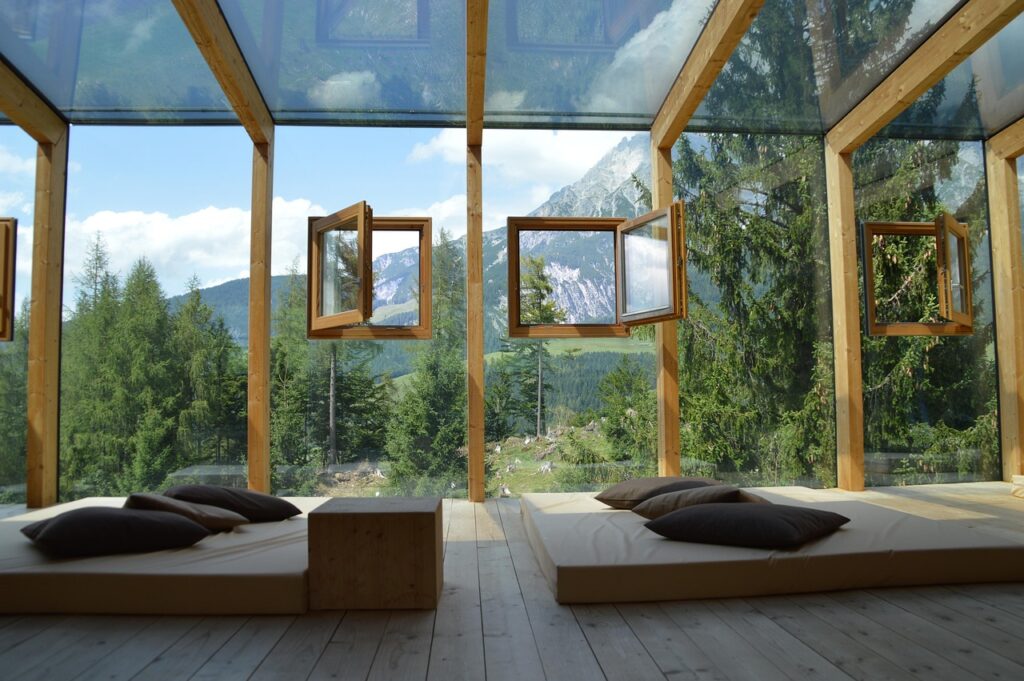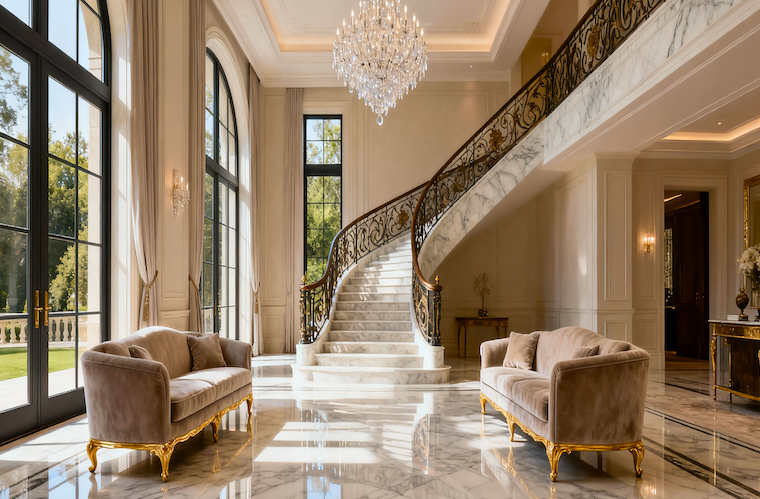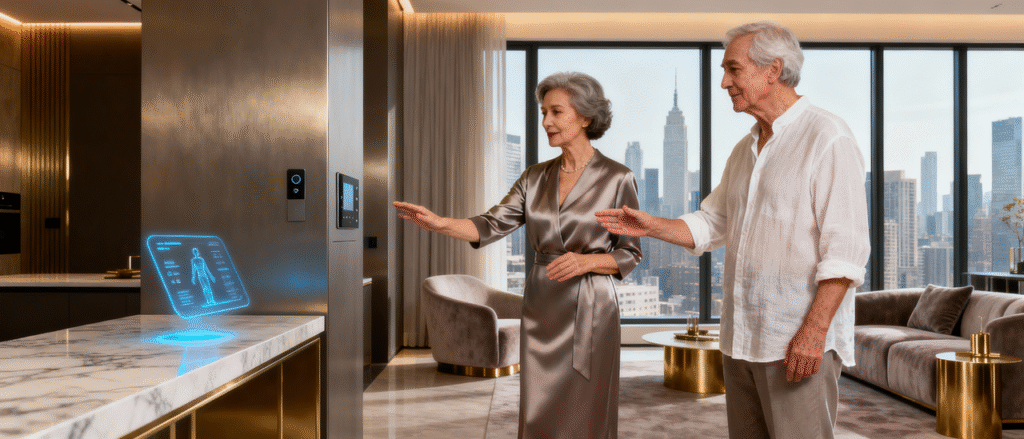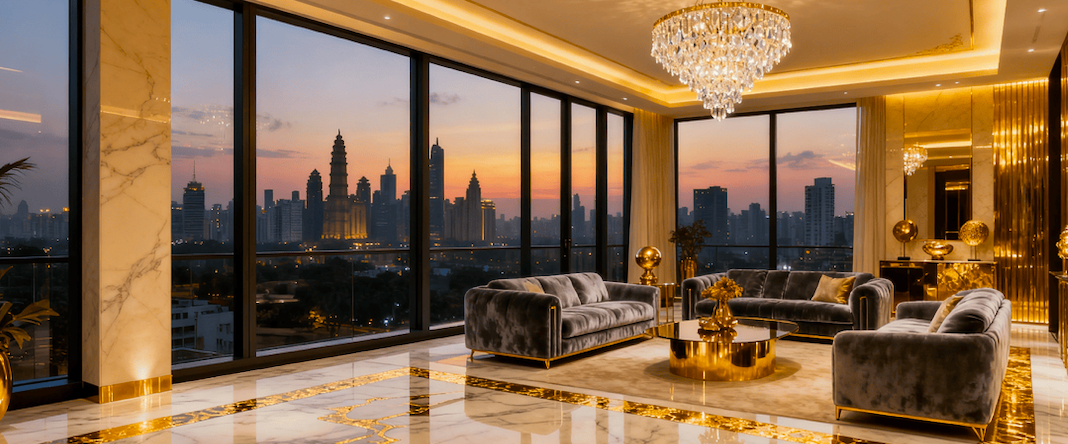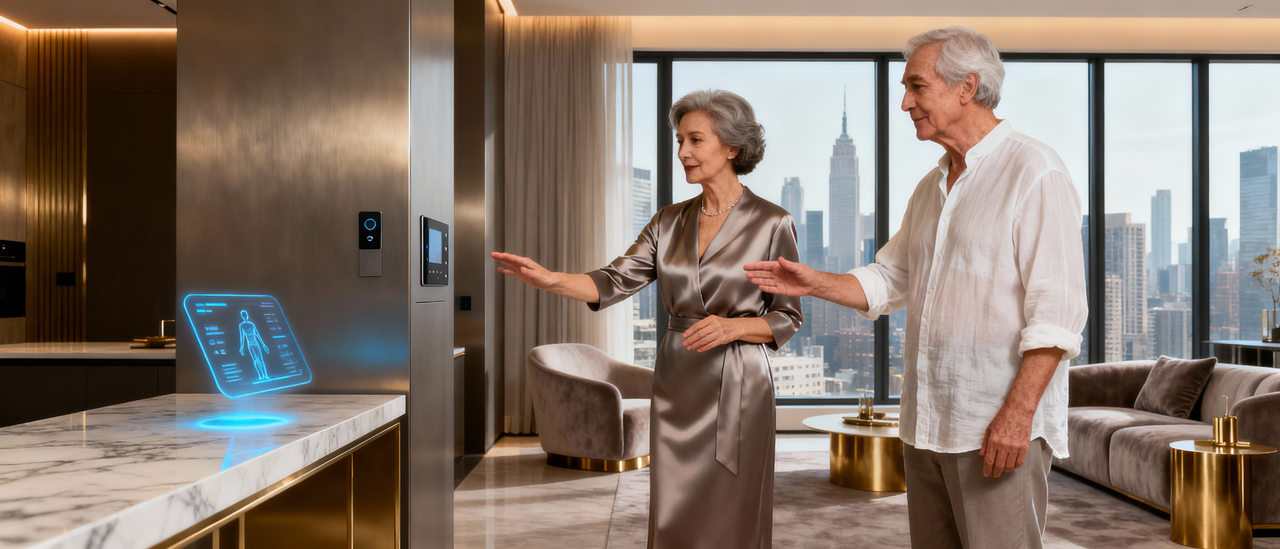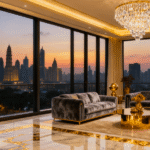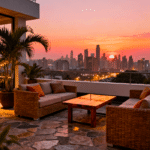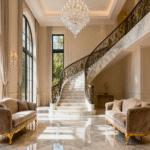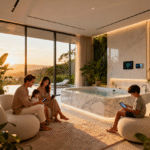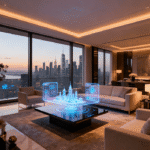Now Reading: Green Homes: The $1.2 Trillion Asset Class Redefining Ultra-Luxury Living and Generational Wealth
- 01
Green Homes: The $1.2 Trillion Asset Class Redefining Ultra-Luxury Living and Generational Wealth
Green Homes: The $1.2 Trillion Asset Class Redefining Ultra-Luxury Living and Generational Wealth
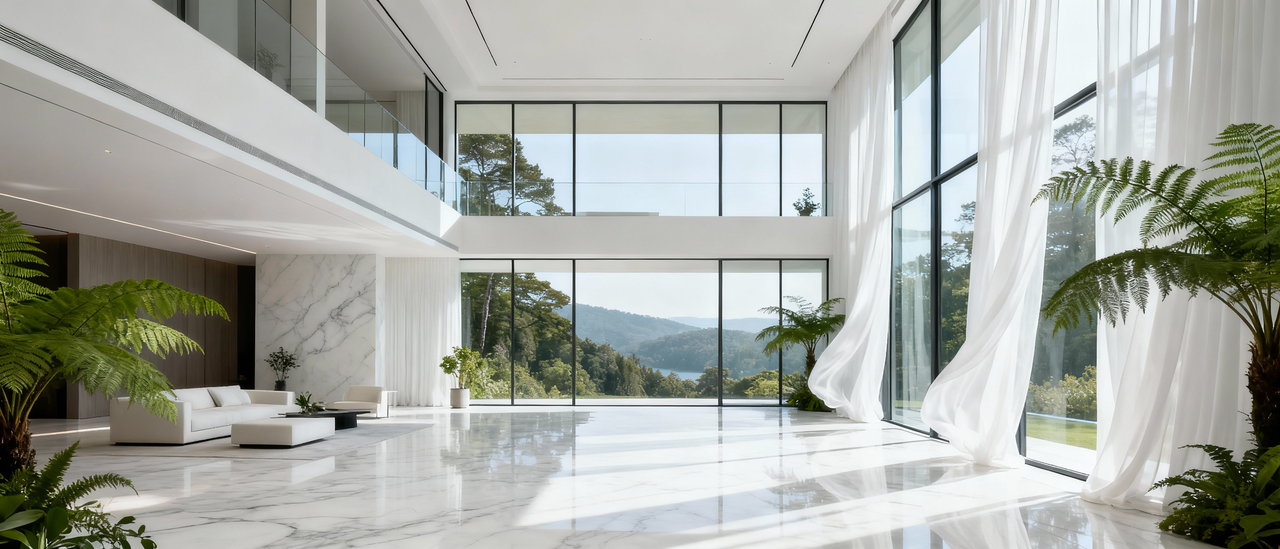
In the hushed corridors of family offices from Mumbai to Manhattan, a seismic shift is unfolding. The global green buildings market—valued at $474.21 billion in 2024—is projected to surge to $1.177 trillion by 2032, growing at a commanding 9.6% CAGR. But beyond these staggering figures lies a more profound transformation: green homes have transcended environmental virtue to become the ultimate status symbol, wealth preservation vehicle, and generational asset for the world’s ultra-high-net-worth individuals.
This is not merely about solar panels adorning palatial estates. It represents a fundamental reimagining of luxury itself—where wellness architecture, climate resilience, and ESG compliance converge with the timeless pursuit of legacy, prestige, and returns that compound across centuries, not quarters.
The New Definition of Luxury: When Green Becomes Gold
From Marble Excess to Biophilic Elegance
Walk through Bill Gates’ $130 million Xanadu 2.0 in Medina, Washington, and you encounter not ostentatious displays of wealth, but a symphony of geothermal systems, lake-source cooling, and intelligent energy management that would make any sustainability czar envious. Jeff Bezos’ $165 million Beverly Hills compound whispers its luxury through reclaimed woods and sophisticated water reuse systems. These aren’t compromises—they’re the new benchmarks of sophistication.
“True luxury today is living in harmony with the planet while enjoying every comfort,” notes a wealth advisor to several Forbes Global 2000 families. “My clients view green certification the way their grandparents viewed a Fifth Avenue address—as an essential marker of arrival.”
The data validates this cultural shift. India’s luxury real estate market, where green-certified properties now command a 12.5% sale price premium and 15% rental premium, exemplifies this trend. In Singapore, that premium climbs to 17.5%. These aren’t niche markets—India’s green building sector alone is projected to reach $85 billion by 2032, growing at 10.59% annually.
The Wellness Imperative: Architecture as Medicine
But the transformation extends beyond financial metrics into the realm of human flourishing. Modern wellness homes integrate biophilic design principles—those innate biological connections with nature that reduce cortisol, enhance cognitive function, and promote longevity—into every architectural decision.
Consider Bryan Cranston’s Platinum LEED-certified beach house in Ventura County: 12-inch thick walls for superior insulation, photovoltaic arrays, rainwater collection systems, and radiant heated floors create not just an eco-residence, but a health sanctuary. Research confirms residents of sustainable housing experience measurably improved mental and physical well-being, a luxury no amount of imported marble can replicate.
At developments like Sobha Reserve in Dubai, 30% of space is devoted to green areas featuring trees across 60 species with documented medicinal properties. This isn’t landscaping—it’s environmental pharmacy. The estate’s microclimate reduces the urban heat island effect while purifying air quality, creating an atmospheric experience that transcends traditional luxury amenities.
The Global Investment Landscape
Regional Dynamics: A Tale of Three Continents
India: The Emerging Colossus
India stands at the epicenter of this green revolution. With an estimated $1.3 trillion in intergenerational wealth transfer unfolding over the next decade, Indian family offices have exploded from 45 in 2018 to nearly 300 in 2024. These sophisticated wealth stewards increasingly view green-certified properties as essential portfolio anchors.
NRI investors—particularly from the Gulf—are supercharging this momentum. Gulf-based NRIs contributed significantly to India’s luxury property sales, which exceeded 50% of total real estate transactions in metropolitan markets during 2024. Their preferences skew heavily toward IGBC Gold/Platinum and GRIHA 5-star certified developments, recognizing both the appreciation potential and regulatory tailwinds.
Mumbai’s Godrej Platinum project exemplifies this convergence: IGBC Platinum certification, 25% energy reduction, 40% water savings, and a 14% valuation premium over conventional luxury towers in the same micromarket. Early investors have realized 18% annual appreciation—nearly double the 9.8% average for non-certified luxury developments.
UAE: The Aspirational Benchmark
Dubai has become the global laboratory for ultra-luxury sustainable living. The city’s green building market has grown 400% since 2020, with 28% of UHNIs now owning at least one green-certified property. Projects like Sustainable City Dubai—entirely powered by renewable energy with zero-waste systems—command 22% premiums and attract royalty, tech billionaires, and impact investors alike.
The UAE’s regulatory environment accelerates this trend: tax incentives for green building materials, expedited approvals for LEED/BREEAM projects, and government-backed sustainability bonds that finance eco-developments at favorable rates.
Singapore: Where Policy Meets Premium
Singapore’s Building and Construction Authority mandates that 80% of new buildings achieve Green Mark certification by 2030. This regulatory certainty has created a liquid market for green properties, with 23% of UHNIs holding certified assets. The Jewel at Changi Airport—with its indoor waterfall and 100,000-plant forest—illustrates how biophilic architecture can transform commercial spaces into experiential destinations, a model now migrating to residential ultra-luxury.
Europe & North America: The Legacy Players
London’s The Crystal—a Siemens sustainable cities initiative—achieved BREEAM Outstanding and LEED Platinum, demonstrating 70% energy reduction versus conventional office buildings. In Manhattan, developments like Riverhouse (home to Leonardo DiCaprio, Tyra Banks, and Oliver Stone) pioneered Gold LEED certification in luxury condominiums, featuring twice-filtered air, gray water recycling, and bamboo flooring throughout. DiCaprio liked it so much he purchased a second unit for $8 million in 2014.
These properties appreciate faster and maintain occupancy during economic downturns—a critical consideration for wealth preservation. During the 2020-2021 market volatility, green-certified luxury properties in major US markets outperformed conventional equivalents by 12-15% in value retention.
The Data Imperative: Numbers That Demand Attention
Market Growth Trajectory
| Year | Global Market (USD Bn) | India Market (USD Bn) | YoY Growth (Global) |
|---|---|---|---|
| 2024 | $474.21 | $37.99 | Baseline |
| 2026 | $679.05 | $46.46 | 9.59% |
| 2028 | $815.13 | $56.82 | 9.55% |
| 2030 | $977.13 | $69.51 | 9.47% |
| 2032 | $1,177.02 | $85.00 | 10.08% |
Sources: ResearchAndMarkets.com (2024), MarketsAndData.com (2024)
The Premium Architecture
Green-certified properties consistently outperform across every financial metric:
- Sale Price Premium: 8.5% (US LEED) to 17.5% (Singapore) above comparable conventional properties
- Rental Yields: 10-18% premium, with India leading at 15%
- Liquidation Speed: 20-30% faster time-to-sale
- Operating Cost Savings: 25-50% energy reduction, 30-50% water savings
- Cumulative ROI Advantage: +33% over 10-year horizon versus conventional luxury properties
Sources: JLL India (2024), CBRE Global Research (2024), Knight Frank Wealth Report (2024)
Institutional Validation
The most telling indicator: institutional capital allocation. UHNI and family office portfolios have increased green real estate allocation from 5% in 2020 to 23% in 2024, with projections reaching 28% by end-2025. ESG-focused real estate investment is expected to soar 84% to reach $33.9 trillion globally by 2026, according to PwC research.
Nine out of ten institutional investors now consider ESG factors material to real estate investment decisions—a threshold shift that ensures sustained demand and premium valuations for certified properties.
The Emotional Calculus: Status, Legacy, and Meaning
Prestige Reimagined
In the rarefied circles where net worth exceeds $100 million, status markers evolve. The yacht, the Davos invitation, the Patek Philippe—these remain. But increasingly, the conversation at private wealth forums gravitates toward carbon-neutral estates, Net Zero certifications, and regenerative architecture.
“My clients want to know they’re on the right side of history,” explains a managing director at a top-tier family office. “They’ve achieved financial security. Now they’re optimizing for legacy—how they’ll be remembered, what they’ll pass to grandchildren who live on a planet profoundly shaped by climate change.”
This isn’t virtue signaling. It’s dynastic risk management. Families like the Waltons (Walmart) have funneled wealth into climate-focused platforms. Lukas Walton’s Builders Vision represents a new archetype: the billionaire as ecological steward, wielding capital to combat planetary crises while generating returns.
The Wellness Luxury Nexus
Wealth, ultimately, serves health and happiness. Green homes deliver measurably superior living experiences:
- Air Quality: LEED-certified homes provide twice-filtered air, low-VOC materials, and superior ventilation—reducing respiratory ailments and allergies by up to 40%
- Circadian Optimization: Designs maximizing natural daylight improve sleep quality, mood regulation, and productivity
- Thermal Comfort: Passive solar design and superior insulation create consistent temperatures without energy-intensive HVAC
- Acoustic Excellence: Advanced insulation and natural materials reduce noise pollution, a major urban stressor
For UHNIs accustomed to optimization across all life domains—from personal trainers to concierge medicine—green architecture represents the logical extension of wellness investment.
Generational Continuity
Studies show 70% of family fortunes dissipate by the third generation. The ultra-wealthy engineer multi-century plans to break this curse, and green real estate plays a pivotal role.
Hard assets—particularly properties—anchor generational wealth. But not all properties appreciate equally. Green-certified homes combine:
- Regulatory Resilience: As carbon taxes and green building mandates proliferate, certified properties avoid obsolescence
- Operating Leverage: Energy and water savings compound annually, creating widening moats versus conventional buildings
- Cultural Alignment: Future generations increasingly demand sustainability—inheritance that burdens heirs ethically becomes liability, not legacy
India’s wealth transfer—$1.3 trillion moving across generations this decade—is being structured through family offices that prioritize ESG-compliant real estate. Pre-leased commercial green properties, in particular, offer the holy trinity: income stability, capital appreciation, and values alignment.
Strategic Imperatives: Your Roadmap to Green Wealth
Immediate Horizon (0-18 Months)
1. Portfolio Audit & Green Allocation
Target 15-25% of real estate holdings in certified properties. Prioritize LEED Platinum, IGBC Gold/Platinum, or BREEAM Excellent ratings. Avoid greenwashing—demand third-party verified certifications.
2. Geographic Diversification
Balance high-growth markets (India 10.59% CAGR, UAE 8.2% CAGR) with stable premium markets (Singapore, London, select US cities). Currency hedging through multi-geography green portfolios reduces macroeconomic volatility.
3. Certification Arbitrage
Acquire pre-construction or early-stage certified developments. The premium gap widens post-completion and occupancy. Early entry captures maximum appreciation.
Mid-Term Horizon (2-5 Years)
4. Net Zero Positioning
Governments globally are mandating Net Zero by 2030-2050. Properties meeting these standards today will command unprecedented premiums as deadlines approach. Invest in retrofit opportunities—existing luxury properties upgraded to Net Zero capture both historic charm and future-proof performance.
5. Wellness Integration
Prioritize developments with WELL Building Standard or Fitwel certification. These health-focused ratings command premiums among HNI buyers who increasingly view homes as health assets.
6. Climate Resilience Geography
As climate change accelerates, certain geographies face existential risks (coastal flooding, extreme heat, water scarcity). Green homes in climate-resilient regions—high elevation, temperate zones, areas with robust infrastructure—will outperform dramatically.
Long-Term Horizon (5-20 Years)
7. Institutional Co-Investment
Partner with climate-focused funds and family offices building green property portfolios. Shared due diligence, bulk acquisition leverage, and aligned values reduce risk while maintaining upside.
8. Regenerative Development
Move beyond “less bad” (reduced emissions) to “net positive” (ecosystem restoration, carbon sequestration). Properties that actively improve environmental conditions will represent the apex of luxury and command corresponding valuations.
9. Legacy Structuring
Establish dynasty trusts funded by green property holdings. Structure perpetual funding through insurance and renewable energy revenues from property assets. Mandate heirs contribute to trust, reinforcing stewardship culture.
Case Studies: Lessons from the Elite
Case Study 1: Godrej Platinum, Mumbai
Market: India | Certification: IGBC Platinum | Type: Residential Tower
Godrej Properties, one of India’s most respected developers, launched this ultra-luxury project in Mumbai’s Vikhroli with uncompromising sustainability:
- Energy Performance: 25% reduction versus conventional luxury towers through solar arrays, energy-efficient glazing, and intelligent building management systems
- Water Management: 40% savings via rainwater harvesting, sewage treatment, and low-flow fixtures
- Materials: 20% recycled content, low-VOC paints, and locally sourced materials reducing embodied carbon
- Results: 14% valuation premium over comparable non-certified luxury projects, 18% annual appreciation versus 9.8% market average, 95% occupancy
Source: JLL India Research (2024), Anarock Property Consultants
Case Study 2: One Central Park, Sydney
Market: Australia | Certification: 5 Star Green Star | Type: Mixed-Use Tower
Designed by Jean Nouvel and collaborator Patrick Blanc, this development reimagined urban living:
- Vertical Gardens: 35,000 plants across 1,120 sq meters of living walls, creating a vertical forest visible across Sydney
- Heliostat System: Computer-controlled mirrors redirect sunlight to lower floors and public spaces, reducing lighting energy by 30%
- Tri-Generation Plant: On-site power generation reducing emissions by 65% versus grid reliance
- Results: Units command 18-22% premium over comparable Sydney CBD luxury apartments, 98% occupancy, international awards including Council on Tall Buildings & Urban Habitat recognition
Source: CTBUH (2024), CBRE Australia
Case Study 3: The Crystal, London
Market: UK | Certification: BREEAM Outstanding + LEED Platinum | Type: Commercial/Exhibition
Siemens’ showcase for sustainable urban development achieved the highest sustainability ratings globally:
- Energy: 70% reduction versus conventional buildings through solar PV, ground-source heat pumps, and black water heat recovery
- Water: 100% rainwater harvesting for non-potable uses, reducing mains water consumption by 90%
- Design: Maximized daylighting, natural ventilation, and thermal mass from exposed concrete
- Impact: Zero carbon emissions during operation, has influenced over £2 billion in subsequent sustainable development in London
Source: BRE Global (2024), Siemens Sustainability Report
Risks and Realities
No investment thesis is complete without acknowledging countervailing forces:
Premium Compression Risk: As green building becomes standard, current premiums may compress. However, data suggests certifications tier—baseline green loses premium, but Platinum/Outstanding/Net Zero maintain advantage.
Certification Cost: Achieving top-tier ratings adds 5-8% to development costs. Payback periods range 5-8 years. For short-horizon investors, this poses cash flow challenges.
Greenwashing Proliferation: Unscrupulous developers market “green” features without third-party verification. Due diligence on actual certification, not marketing claims, is essential.
Market Saturation: Some metros (Singapore, Dubai) approach green building saturation. Early-mover advantages diminish; focus shifts to emerging markets (India, Southeast Asia, Latin America).
Regulatory Uncertainty: Policy shifts—changing green incentives, certification standard evolution—create moving targets. Diversification across certification types and geographies mitigates this.
Balanced against these risks: the secular mega-trend of climate consciousness, institutional capital flooding into ESG assets, and the tangible performance data demonstrating sustained premiums and superior returns.
Five Pro Tips for the Discerning Investor
1. Certification Stacking
Pursue properties with multiple certifications (LEED + WELL, or IGBC + GRIHA). Dual-certified properties command 8-12% higher premiums than single-certified equivalents and attract broader buyer pools.
2. Pre-Leased Green CRE
For income-focused portfolios, green-certified commercial real estate pre-leased to investment-grade tenants offers 7-9% yields with minimal volatility. ESG-mandated corporations increasingly require certified office space, creating structural demand.
3. Retrofit Opportunities
Historic or architecturally significant properties retrofitted to Platinum standards capture provenance premium plus green premium—a rare dual arbitrage. London, Paris, and New York offer deep markets.
4. Developer Track Record
Partner with developers possessing certified project portfolios—Sobha, Godrej, DLF (India); CapitaLand (Singapore); Lend Lease (Australia). Execution risk in green building is material; proven operators deliver.
5. Energy Revenue Stacking
Properties with solar arrays can monetize excess generation through grid sales, carbon credits, and renewable energy certificates. This creates multiple revenue streams beyond traditional real estate returns, boosting IRR by 200-400 basis points.
FAQ Section
Are green homes more expensive to maintain?
Contrary to intuition, green homes typically cost 15-25% less to maintain. Durable materials, efficient systems, and reduced energy/water consumption dramatically lower ongoing expenses. Many green homes generate net-positive cash flow from energy sales, effectively paying for their own maintenance.
How do I verify genuine green certification versus greenwashing?
Demand third-party certified ratings: LEED (USGBC), IGBC, GRIHA, BREEAM, WELL. Request certification documentation, energy modeling reports, and post-occupancy performance data. Engage independent sustainability consultants for portfolio-level due diligence. Avoid projects claiming “green” without formal certification.
What ROI timeline should I expect for green property investment?
Premium capture begins immediately post-acquisition (higher rent/resale). Energy savings compound annually. Most investors achieve payback of green premium within 5-7 years, with outperformance widening thereafter. Ten-year cumulative ROI averages 33% higher than conventional luxury properties, per Knight Frank research (2024).
Which certification is most valuable for resale in India?
IGBC Gold/Platinum commands highest recognition among Indian buyers (85% preference score, 28% market share). GRIHA 5 Star offers strong performance (78% preference score, 18% market share) at lower certification cost. For global buyers, dual LEED + IGBC certification provides maximum liquidity and premium realization.
Conclusion: Building Wealth That Endures
The green homes revolution transcends environmental altruism. It represents the convergence of financial outperformance, regulatory alignment, wellness optimization, and generational legacy—the four pillars upon which dynastic wealth is built.
As $1.3 trillion flows across Indian generations and family offices globally restructure portfolios for multi-century horizons, green-certified properties emerge as essential allocations. They deliver today’s premium returns while future-proofing against tomorrow’s climate realities and regulatory mandates.
For the ultra-wealthy, the question is no longer whether to invest in green homes, but how aggressively to allocate before premiums widen further and supply tightens.
The estates of tomorrow—the properties that command premiums in 2050 and beyond—are being built today. Positioning now, while the market remains under-allocated and certification arbitrage opportunities persist, may represent the decade’s defining wealth-building opportunity.
After all, the greatest family fortunes weren’t built on what was—they were built on what would be. Green homes are what will be.
YouTube Learning Resources
Free resources to download
Green Homes Investment Guide: Executive Summary


